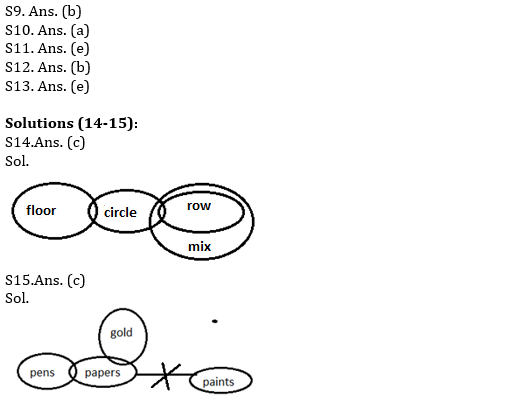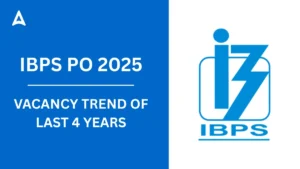Table of Contents
Direction (1-5): Study the following information and answer the given questions:
Nine persons are sitting in a row either facing north or south direction. They like different colors green, blue and red. They are sitting adjacent to each other in a group of three each likes different color from each other. No two persons who like same color sit together. Not more than two persons facing same direction sit together. D is one of the persons and does not like same color as H. More than three persons sit between H and I. F sits exactly in middle of the row. H is 3rd to the left of F and likes green. One of the neighbor of H is A, who likes red. G is 3rd to the left of C and likes blue. B likes red. The number of person sitting between E and B is same as between B and I. All the persons who like blue face north except the one sitting 2nd to the right of F. H and I face opposite direction. One person sits between H and C, who faces south. All the persons who like red face north. I does not like blue or red. E likes Blue.
Q1.Who among the following likes green?
(a) E
(b) F
(c) C
(d) B
(e) None of these
Q2. How many persons sit to the left of A?
(a) Two
(b) One
(c) Three
(d) Four
(e) None
Q3. How many persons sits between F and I?
(a) Two
(b) One
(c) Three
(d) Four
(e) None of these
Q4. Which of the following statement is not true regarding E?
(a) E likes Blue
(b) Both the neighbor of E like green
(c) Two persons sit between E and B
(d) D sits next to E
(e) None of these
Q5. Four of the following belongs to a group find the one that does not belong to that group?
(a) E
(b) F
(c) B
(d) C
(e) I
Direction (6-8): Study the following information and answer the given question.
T is the sister of D. D is married to P. P is the son of M.T is the mother of J. Y is the father of U.Y has only one son and only one daughter. U is the daughter of T. Q is the son of D.
Q6. How is P related to T?
(a) Brother
(b) Cannot be determined
(c) Brother-in-law
(d) Cousin Brother
(e) Uncle
Q7. How is J related to D?
(a) Son
(b) Niece
(c) Son-in-law
(d) Nephew
(e) Daughter
Q8. How is Q related to M?
(a) Son-in-law
(b) Grandson
(c) Nephew
(d) Son
(e) Cannot be determined
Directions (9-13): Study the following information carefully to answer the given questions.
Eight persons P, Q, R, S, T, U, V and W sitting around a circular table with equal distance between each other but not necessarily in the same order. Some of them are facing the centre while some are facing outside (i.e. away from the centre).
They all belong to four different places viz. East Coast, West Coast, North Wellington and South Africa, and two persons belong to each place.
Note: Same directions means that if one person facing the centre then the other person also faces the centre and vice versa. Opposite direction means if one person is facing the centre then the other person faces outside and vice versa.
R sits third to the left of W, who belongs to South Africa and both are facing the same direction. T sits fourth to the left of V and both are facing opposite directions but they are from same place. R and Q are not facing the same direction but R is an immediate neighbour of T. U sits second to the right of R.S is not facing the centre and belongs to North Wellington. The one who is on the immediate left of U is not facing the centre. The immediate neighbours of T are facing the centre. The persons who belong to East Coast sit adjacent to each other, but face opposite directions. The persons who belong to West Coast sit opposite to each other. S and U are immediate neighbours of W. One of the persons who belong to South Africa is an immediate neighbour of the persons who belongs to North Wellington. V sits on the immediate right of Q, who belongs to East Coast.
Q9. Who among the following belongs to South Africa?
(a) T, V
(b) R, W
(c) U, P
(d) S, W
(e) None of these
Q10. In the arrangement, how many persons are facing the centre?
(a) Five
(b) Two
(c)Three
(d) Four
(e) None of these
Q11. Which of the following statement is true about P?
(a) P is an immediate neighbour of R and the person who belongs to West Coast
(b) Both the immediate neighbours of P are facing the centre
(c) P is third to the right of the person who belongs to North Wellington
(d) None of the given statements is true
(e) P sits opposite W, who belongs to South Africa
Q12. Who among the following sits third to the right of W?
(a) V, who belongs to South Africa
(b) Q, who belongs to East Coast
(c) T, who belongs to West Coast
(d) Can’t be determined
(e) None of these
Q13. Four of the following five are alike in a certain way and hence form a group. Which is the one that does not belong to that group?
(a) U, W
(b) T, S
(c) R, P
(d) Q, S
(e) W, Q
Directions (14-15): In each of the questions given below three statements are followed by some conclusions. You have to take the given statements to be true even if they seem to be at variance from commonly known facts. Read all the conclusions and then decide which of the given conclusions logically does not follows from the given statements disregarding commonly known facts.
Q14. Statements:
Only a few floor are circle
Only a few circle are row.
All row are mix.
Conclusions:
I. Some floor can be mix.
II. All mix can be circle.
III. Some mix is floor.
(a)Only I and II
(b)Only II and III
(c)Only III
(d)All follow
(e)None of these
Q15. Statements:
Only a few pens are papers.
No papers are paint.
Only a few papers are gold.
Conclusions:
I. All gold can be paper.
II. Some paint can be pen.
III. All gold can be paints.
(a)Only I and II
(b)Only II and III
(c)Only III
(d)All follow
(e)None follow
Practice More Questions of Reasoning for Competitive Exams:
Solutions


Download PDF of this Reasoning Quiz for IBPS PO/RBI Assistant Mains 2020
Practice with Crash Course and Online Test Series for IBPS PO/RBI Assistant 2020:
- RBI Assistant Mains 2020 Online Test Series
- IBPS PO Online test series (Prelims + Mains) 2020 by Adda247
- IBPS KA MAHAPACK Online Live Classes




 GA Capsule for SBI Clerk Mains 2025, Dow...
GA Capsule for SBI Clerk Mains 2025, Dow...
 The Hindu Review October 2022: Download ...
The Hindu Review October 2022: Download ...
 IBPS PO Vacancy Trend of Last 4 Years
IBPS PO Vacancy Trend of Last 4 Years





